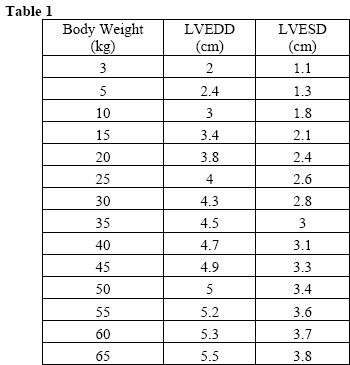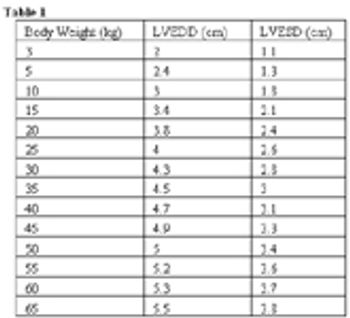Kristin MacDonald, DVM, PhD, DACVIM (Cardiology)
Articles by Kristin MacDonald, DVM, PhD, DACVIM (Cardiology)

Congenital heart disease (CHD) is a morphologic defect of the heart or great vessels which is present at birth. "Congenital" does not imply the defect was inherited, although many CHD are heritable. CHD may also be caused by de novo spontaneous mutations, which have the potential to be transmitted to progeny. Diagnosis of CHD is important for the health of the patient and also to eliminate affected individuals from the breeding pool.

The primary indication for obtaining an electrocardiogram (ECG) is to evaluate an arrhythmia. Patients with a history of syncope, episodic weakness, or collapse should be evaluated with an ECG. An ECG is an insensitive test for assessment of specific cardiac chamber enlargement, and interpretation of structural heart disease is best done using radiography and echocardiography.

Collapse and shock are a clinical manifestation of many different severe diseases, and requires emergency triage and care. Other dogs may present with a history of episodes of collapse and may be clinically stable on presentation. These two categories of patients are treated very differently, but they have some similar differential diagnoses.

Pericardial effusion is a fairly common acquired heart disease in dogs, and prevalence has been reported to be 0.43% (or 1 dog per 233 cases) of dogs presenting to a referral veterinary hospital, and accounts for approximately 7% of dogs with clinical signs of cardiac disease.1

Pulmonary hypertension (PH) is defined by a systolic pulmonary artery pressure greater than 25 mmHg. The incidence of PH is difficult to define due to lack of clinical awareness, non-specific clinical signs, and difficulty in confirming the diagnosis.

Respiratory abnormalities are relatively common in cats, who may suffer from a wide range of disease processes. An initial triage step in the management of a dyspnic cat is to determine whether the dyspnea is cardiogenic or due to extracardiac (primary pulmonary) disease. This task is in no way a simple one, as cats often have non-specific history and physical examination abnormalities.

Tricks to handle the adverse effects: never with- hold water, always have water available or there will be much more significant dehydration and azotemia.

Echocardiography has emerged as the most valuable non-invasive tool for evaluation of cardiac structure, function, blood flow patterns, and has greatly diminished the need for diagnostic cardiac catheterizations and angiocardiography in many cases. Echocardiography is one tool for evaluation of the cardiac patient, but should be used in conjunction with other diagnostic tests including thoracic radiography and electrocardiography for a global assessment of the patient.

Although there are highly sophisticated and advanced diagnostic modalities in cardiology, the basic technique of a good cardiovascular examination is still an essential fundamental element of the cardiovascular workup. Other basic diagnostic modalities that are readily available in most practices include thoracic radiographs, electrocardiography, and blood pressure measurement.

Echocardiography has emerged as the most valuable non-invasive tool for evaluation of cardiac structure, function, blood flow patterns, and has greatly diminished the need for diagnostic cardiac catheterizations and angiocardiography in many cases.

The primary indication for obtaining an electrocardiogram (ECG) is to evaluate an arrhythmia.

Feline heart disease is common and can be challenging to diagnose.

A guide to cardiac drug selection.

Congestive heart failure (CHF) is a common sequela to severe cardiac disease.

Pericardial effusion is a fairly common acquired heart disease in dogs, and prevalence has been reported to be 0.43% (or 1 dog per 233 cases) of dogs presenting to a referral veterinary hospital, and accounts for approximately 7% of dogs with clinical signs of cardiac disease.



